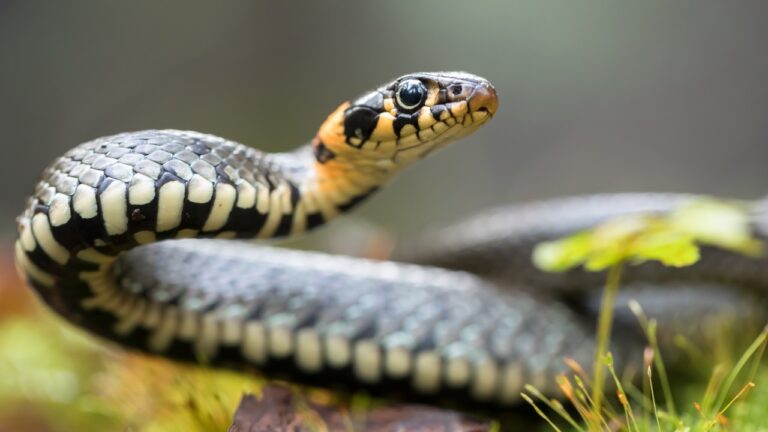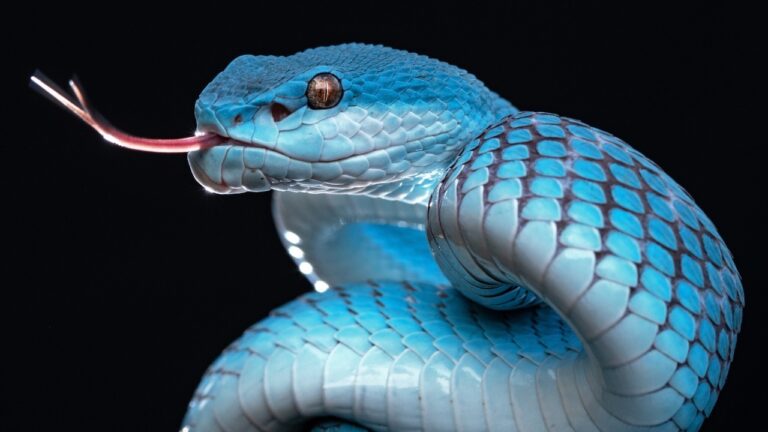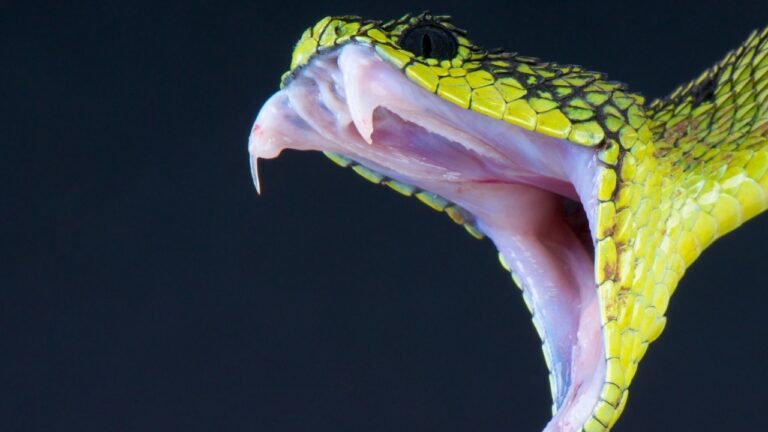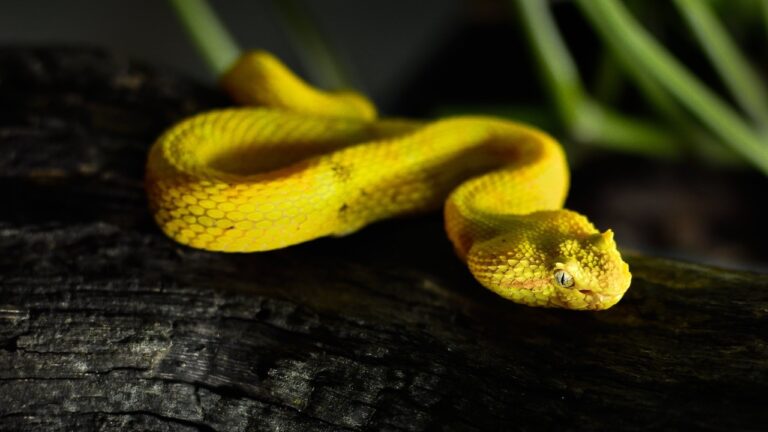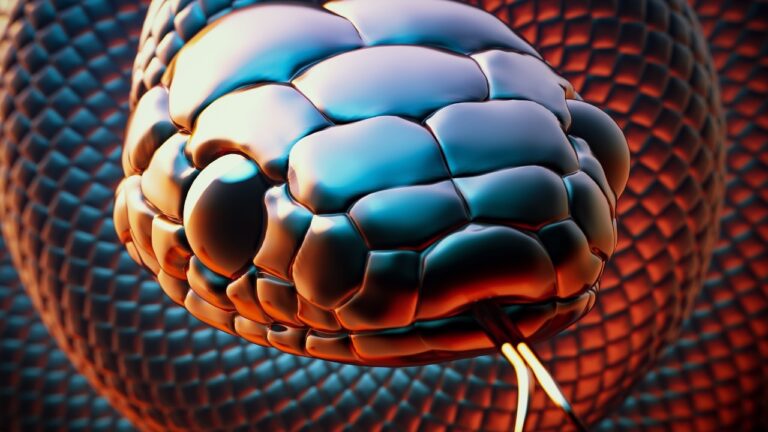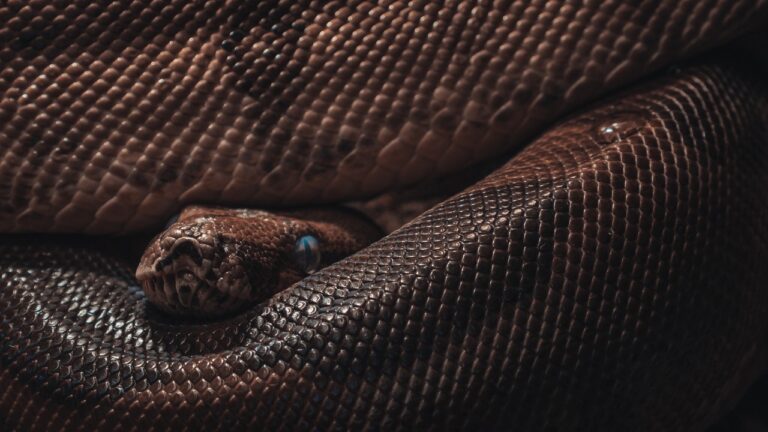Snake Feeding Schedule: A Comprehensive Guide for Optimal Nutrition
Importance of a Proper Snake Feeding Schedule
When it comes to keeping a snake as a pet, providing proper nutrition is essential for their overall health and well-being. Just like any other animal, snakes require a balanced and consistent diet to thrive in captivity. This is where a well-planned snake feeding schedule comes into play.
A snake’s diet is vastly different from that of a cat or a dog. These fascinating reptiles are carnivores, meaning their primary source of nutrition comes from consuming other animals. In the wild, snakes hunt and devour a variety of prey, such as rodents, birds, and even other reptiles. However, as snake owners, it is our responsibility to replicate this natural diet in captivity.
Maintaining a regular feeding schedule is crucial because snakes have unique dietary needs that must be met to ensure their optimal health. A proper snake feeding schedule not only provides the necessary nutrients but also helps prevent potential health issues caused by overfeeding or underfeeding.
By following a well-structured feeding routine, you can ensure that your snake receives the right balance of proteins, fats, vitamins, and minerals required for their growth and development. Additionally, a consistent feeding schedule helps regulate a snake’s metabolism and supports their digestive system, enabling them to efficiently process and absorb nutrients from their meals.
Furthermore, establishing a routine can also have a positive impact on your snake’s behavior. Snakes are known to be creatures of habit, and having regular feeding times can help reduce stress and anxiety, promoting a sense of security in their environment.
In the following sections, we will explore the various factors to consider when creating a snake feeding schedule, including species-specific dietary needs, age and size of the snake, and feeding frequency. We will also delve into the different feeding methods and discuss how to monitor and adjust the feeding schedule as your snake grows. Additionally, we will touch upon additional considerations such as shedding periods, breeding season, and medical conditions that may require special attention.
So, whether you have a ball python, corn snake, boa constrictor, or king snake, this comprehensive guide will provide you with the knowledge and insights to establish a snake feeding schedule that ensures the long-term health and vitality of your scaly companion. Let’s dive in and discover the secrets to providing optimal nutrition for your snake!
Factors to Consider
When it comes to creating a snake feeding schedule, there are several factors that need to be taken into consideration. These factors include the species-specific dietary needs, the age and size of the snake, and the feeding frequency. By carefully considering these factors, you can ensure that your snake receives the optimal nutrition it needs to thrive.
Species-specific dietary needs
One of the most important factors to consider when creating a snake feeding schedule is the species-specific dietary needs. Different snake species have varying dietary requirements, and it is crucial to understand what your particular snake needs in order to provide a balanced diet. For example, while some snakes are strictly carnivorous and require a diet primarily consisting of rodents, others may also incorporate insects or other small prey into their diet.
To determine the species-specific dietary needs of your snake, it is essential to research and consult reliable sources. Websites such as SerpentSuppers.com offer valuable information on snake nutrition and provide detailed guides for different snake species. By understanding your snake’s dietary requirements, you can ensure that you are providing the right type and amount of food to keep your pet healthy and satisfied.
Age and size of the snake
The age and size of your snake play a significant role in determining its feeding schedule. Younger snakes, especially hatchlings, have different nutritional needs compared to adult snakes. They generally require more frequent feeding and smaller prey items to accommodate their smaller size and faster growth rate. As snakes mature and reach adulthood, their feeding frequency and prey size may change accordingly.
It is crucial to consider the age and size of your snake when establishing a feeding schedule. By providing the appropriate prey size and adjusting the feeding frequency, you can ensure that your snake receives the right amount of nutrition to support its growth and development. However, it is important not to overfeed or underfeed your snake, as both can lead to health issues. Consulting a veterinarian or a snake feeding guide can provide valuable insights and help you determine the best feeding schedule based on your snake’s age and size.
Feeding frequency
Determining the feeding frequency for your snake is another crucial factor to consider. The frequency at which you should feed your snake depends on various factors, including its species, age, size, and metabolism. Some snakes require more frequent feeding, while others can thrive with less frequent meals.
A general guideline for feeding frequency is to offer prey to your snake once every 5 to 14 days. However, this can vary depending on the factors mentioned above. Young snakes typically require more frequent meals, while adult snakes may be fed less frequently. It is important to observe your snake’s behavior and body condition to determine if the feeding frequency is appropriate. Regular monitoring will help you ensure that your snake is maintaining a healthy weight and body condition.
Keep in mind that the feeding frequency may need to be adjusted as your snake grows and matures. As snakes reach adulthood, their metabolism may slow down, and they may require fewer meals. Conversely, during periods of growth or breeding, they may need more frequent meals to meet their nutritional demands.
By considering the species-specific dietary needs, the age and size of your snake, and the feeding frequency, you can create a comprehensive snake feeding schedule that promotes optimal nutrition and overall well-being. Remember to consult reliable sources and seek professional advice when necessary to provide the best care for your slithery companion.
Determining the Right Feeding Schedule
When it comes to determining the right feeding schedule for your snake, it’s crucial to take into account various factors such as the species, age, size, and feeding frequency. Each snake species has its own unique dietary needs, and understanding these requirements will help you provide optimal nutrition for your scaly friend.
Guidelines for Popular Snake Species
Let’s take a closer look at some popular snake species and their specific feeding guidelines:
Ball Python: Ball pythons are known for their docile nature and relatively small size. As ambush predators, they primarily feed on small mammals in the wild. When it comes to their feeding schedule, ball pythons generally require one appropriately-sized prey item every 7 to 10 days. It’s important to note that ball pythons can sometimes be finicky eaters, so providing a consistent feeding routine is key to maintaining their health.
Corn Snake: Corn snakes are popular pets due to their vibrant colors and manageable size. In the wild, they primarily feed on rodents and occasionally birds. For optimal nutrition, corn snakes typically require one appropriately-sized prey item every 5 to 7 days. It’s important to monitor their body condition and adjust the feeding schedule accordingly to prevent underfeeding or overfeeding.
Boa Constrictor: Boa constrictors are larger snakes with a powerful constricting ability. Their diet mainly consists of mammals, birds, and occasionally reptiles. Boas have a slower metabolic rate compared to some other snake species, so they require less frequent feeding. Typically, adult boa constrictors should be fed one appropriately-sized prey item every 10 to 14 days. However, it’s essential to consider the snake’s size and individual needs when establishing a feeding schedule.
King Snake: King snakes are known for their voracious appetite and diverse diet, which includes rodents, birds, other snakes, lizards, and even eggs. These opportunistic hunters thrive on a varied diet. Generally, king snakes should be fed one appropriately-sized prey item every 5 to 7 days. However, it’s crucial to consider the snake’s size, age, and overall health when determining the feeding frequency.
By following these general guidelines, you can ensure that your snake receives the appropriate amount and type of food to support its nutritional requirements. Remember, maintaining a balance between feeding frequency and portion size is crucial to prevent obesity or malnutrition in your snake.
If you want to delve deeper into snake nutrition and feeding, our snake feeding guide provides comprehensive information on snake diet, prey selection, feeding techniques, and more. Understanding the intricacies of your snake’s digestive system and its nutritional needs will help you develop a feeding schedule that promotes optimal health and vitality.
In the next section, we will explore different feeding methods and the factors to consider when making prey selections, whether live or frozen/thawed. Stay tuned!
Feeding Methods
When it comes to feeding your snake, there are several important factors to consider. Prey selection, whether to use live or frozen/thawed prey, and feeding techniques all play a crucial role in ensuring your snake’s optimal nutrition. Let’s dive into each of these feeding methods to help you make informed decisions for your scaly friend.
Prey Selection
Choosing the right prey for your snake is essential for maintaining a balanced and nutritious diet. Different snake species have varying dietary requirements, so it’s crucial to consider the natural diet of your snake when selecting prey. Some snakes, like ball pythons, primarily feed on small mammals such as mice or rats, while others, like corn snakes, have a diet that includes rodents and birds.
It’s important to ensure that the prey you offer is an appropriate size for your snake. Feeding your snake prey that is too large can lead to digestive issues, while prey that is too small may not provide sufficient nutritional value. Additionally, you may need to consider the age and size of your snake when selecting prey, as younger snakes will require smaller prey items compared to their adult counterparts.
Live vs. Frozen/Thawed Prey
One common dilemma among snake owners is whether to feed live or frozen/thawed prey to their snakes. While some snakes may prefer live prey due to the natural hunting instinct, feeding live prey can come with risks. Live prey has the potential to harm or injure your snake, especially if the prey is larger or more aggressive.
On the other hand, frozen/thawed prey offers a safer alternative. Frozen rodents are readily available and can be purchased from reputable suppliers. They are also nutritionally comparable to live prey, making them a convenient and practical choice. Additionally, feeding frozen/thawed prey reduces the risk of your snake being injured during the feeding process.
Feeding Techniques
Feeding techniques can vary depending on the species and size of your snake. The most common method is using tongs to present the prey to your snake. This allows you to maintain a safe distance while ensuring your snake is actively engaging with its food. Gently wiggling the prey can mimic natural movement and entice your snake to strike and consume it.
It’s crucial to monitor your snake during feeding to ensure it is swallowing the prey properly. Some snakes may need assistance or adjustments to ensure successful ingestion. If you notice any difficulties or abnormalities during feeding, consult a veterinarian or a reptile specialist for guidance.
Remember, the feeding method you choose should prioritize the safety and well-being of your snake while providing the necessary nutrition it needs to thrive. By carefully considering prey selection, opt for frozen/thawed prey when possible, and employing appropriate feeding techniques, you can ensure your snake receives a balanced diet for optimal health.
Continue reading our comprehensive guide on snake feeding schedules to explore more factors and considerations in maintaining your snake’s nutrition and overall well-being.
Click here to read the full snake feeding guide.
Monitoring and Adjusting the Feeding Schedule
Once you have established a proper feeding schedule for your snake, it is essential to monitor their weight and body condition regularly. Maintaining a healthy weight and body condition is crucial for the overall well-being of your snake. This allows them to thrive and ensures that they are receiving the appropriate nutrition for their species.
To monitor your snake’s weight, you can use a digital scale specifically designed for small animals. Weigh your snake regularly and keep a record of their weight. This will help you identify any significant changes that may indicate overfeeding or underfeeding.
In addition to weight, observing your snake’s body condition is equally important. You should be able to feel their ribs but not see them prominently. A healthy snake should have a well-rounded body without any visible bones protruding. If you notice that your snake is becoming too thin or excessively overweight, it may be necessary to adjust their feeding schedule accordingly.
Signs of overfeeding or underfeeding can manifest in various ways. If your snake appears lethargic, refuses food consistently, or has difficulty shedding, it could be a sign of overfeeding. On the other hand, if your snake appears excessively thin, is constantly searching for food, or displays aggressive feeding behavior, it may indicate underfeeding. Monitoring your snake’s behavior closely will help you identify these signs and make the necessary adjustments to their feeding schedule.
As your snake grows, their dietary needs will change. Adapting the feeding schedule to accommodate their growth is vital. Young snakes require more frequent feedings to support their rapid development, while adult snakes typically require larger meals less frequently. It is essential to research and understand the specific requirements of your snake’s species to ensure they receive the proper nutrition at each stage of their life.
Remember, providing a balanced diet is essential for your snake’s health. This includes offering a variety of prey items to ensure they receive all the necessary nutrients. If you have any concerns about your snake’s weight, body condition, or feeding habits, consult with a reptile veterinarian or an experienced reptile keeper for guidance.
By closely monitoring your snake’s weight, body condition, and behavior, and making adjustments to their feeding schedule as needed, you can ensure that they are receiving optimal nutrition and thriving in their environment.
Continue reading the snake feeding guide to learn more about the factors to consider when determining the right feeding schedule for your snake.
Additional Considerations
While establishing a proper feeding schedule is crucial for the overall health and well-being of your snake, there are a few additional factors to consider. These considerations go beyond the basics of species-specific dietary needs and feeding frequency. Let’s explore some of these factors in more detail.
Shedding Periods
One important aspect to keep in mind when planning a snake’s feeding schedule is their shedding periods. Snakes shed their skin periodically as they grow. During this time, their appetite may decrease, and they may become less interested in food. It’s essential to be mindful of this natural process and adjust their feeding routine accordingly.
Shedding can be a delicate and vulnerable time for snakes, and it’s important not to disturb or stress them unnecessarily. If your snake is in the middle of shedding, it’s generally best to hold off on feeding until they have completed the process. This allows them to focus their energy on shedding their old skin and promotes a smoother transition.
Breeding Season
Another consideration that can affect a snake’s feeding schedule is the breeding season. Breeding can be a physically demanding time for snakes, particularly for females. During this period, their energy may be directed towards reproduction rather than food consumption. As a result, their appetite might decrease or fluctuate.
It’s important to be aware of the breeding season for your particular snake species. By understanding their natural reproductive cycle, you can make appropriate adjustments to their feeding schedule. If your snake is in the midst of breeding, it’s essential to monitor their weight and body condition closely to ensure they are maintaining a healthy balance.
Medical Conditions and Special Circumstances
Sometimes, snakes may have specific medical conditions or special circumstances that require modifications to their feeding schedule. For instance, if your snake is recovering from an illness or injury, their appetite may be affected. In such cases, it’s essential to work closely with a veterinarian to develop a feeding plan that supports their recovery.
Additionally, certain medical conditions, such as obesity or malnutrition, may necessitate a more controlled and monitored feeding approach. It’s crucial to follow the guidance of a reptile veterinarian who can provide expert advice tailored to your snake’s specific needs.
Furthermore, if you keep multiple snakes together, you need to consider their individual needs and feeding behaviors. Some snakes may be more dominant and consume a larger portion of the shared meal, leaving others underfed. In such cases, separate feeding enclosures or closely monitoring the feeding process can help ensure each snake receives adequate nutrition.
Remember, every snake is unique, and their feeding schedule should be tailored to their individual requirements. By taking into account shedding periods, breeding seasons, medical conditions, and special circumstances, you can provide the optimal nutrition and care your snake needs to thrive.
In the next section, we will delve into the importance of monitoring and adjusting the feeding schedule based on your snake’s weight and body condition. Stay tuned!
Click here to learn more about snake feeding and nutrition.
Conclusion
In conclusion, establishing a proper snake feeding schedule is crucial for ensuring the optimal nutrition and overall health of your slithering companion. By considering factors such as species-specific dietary needs, the snake’s age and size, and the appropriate feeding frequency, you can create a feeding routine that meets your snake’s nutritional requirements.
Remember to follow the guidelines for popular snake species when determining the right feeding schedule. Whether you have a Ball Python, a Corn Snake, a Boa Constrictor, or a King Snake, understanding their specific dietary needs is essential for their well-being.
When it comes to prey selection, you should carefully choose between live and frozen/thawed prey. Each method has its advantages and considerations, so it’s important to weigh the pros and cons before making a decision. Additionally, mastering the proper feeding techniques will help ensure a safe and successful feeding experience for both you and your snake.
Monitoring and adjusting the feeding schedule as needed is crucial for maintaining a healthy weight and body condition in your snake. Keep an eye out for any signs of overfeeding or underfeeding, as these can lead to health issues over time. As your snake grows, be prepared to adapt the feeding schedule accordingly to support their changing nutritional needs.
Furthermore, there are additional considerations to keep in mind, such as shedding periods, breeding season, and medical conditions. These factors may require adjustments to the feeding schedule to accommodate your snake’s specific circumstances.
By following a well-planned snake feeding schedule, you can provide your scaly friend with the nutrients they need to thrive. Remember to consult reputable sources and seek professional guidance if needed. And always prioritize your snake’s health and well-being above all else.
For more detailed information on snake diet and nutrition, check out our comprehensive snake feeding guide. Stay informed and keep your snake’s nutritional needs in check. After all, a well-fed snake is a happy snake!


